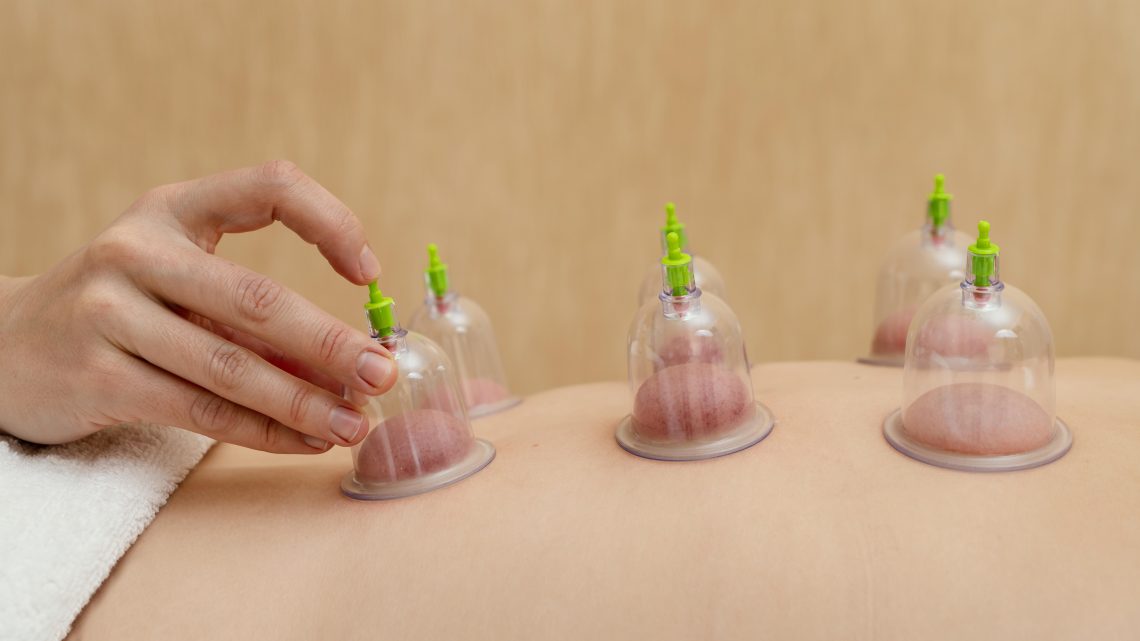Cupping therapy has become increasingly popular among athletes, fitness enthusiasts, and people seeking natural pain relief. You may have seen celebrities or sports stars with circular marks on their backs a result of this ancient healing technique. But the question many people ask is: “Is cupping therapy safe?”
Let’s dive into how cupping works, its benefits, possible side effects, and when it should be avoided so you can make an informed decision about this traditional therapy.
What Is Cupping Therapy?
Cupping therapy is a traditional healing practice that dates back thousands of years, with roots in Chinese, Middle Eastern, and Egyptian medicine. The treatment involves placing special cups usually made of glass, bamboo, silicone, or earthenware on the skin to create suction.
This suction is believed to improve blood circulation, reduce muscle tension, and stimulate healing by promoting the flow of “Qi” (energy) throughout the body.
There are two main types of cupping therapy:
- Dry cupping: Involves suction only no incisions or bleeding.
- Wet cupping (Hijama): Involves light incisions to draw out small amounts of blood, believed to remove toxins.
How Does Cupping Therapy Work?
When suction is applied, it draws blood toward the surface of the skin. This increases local circulation and may help the body remove waste products and repair damaged tissues.
The negative pressure created by the cup helps loosen muscles, encourages blood flow, and sedates the nervous system making it a useful therapy for pain relief and relaxation.
According to experts, cupping may help conditions such as:
- Chronic back and neck pain
- Muscle stiffness or soreness
- Arthritis and joint pain
- Headaches and migraines
- Anxiety and stress-related tension
If you are struggling with headaches or migraines, you can also explore our guide on how to reduce migraine headache for natural pain relief tips.
Is Cupping Therapy Safe?
Cupping therapy is generally considered safe when performed by a trained and certified therapist. However, like any therapeutic treatment, it comes with certain risks and precautions.
Most people experience temporary redness or circular marks on the skin where cups were placed. These marks are not bruises they are caused by increased blood flow and usually fade within a week.
Possible Side Effects of Cupping Therapy
While cupping is safe for most people, some may experience mild side effects, especially if they have sensitive skin or medical conditions. Common side effects include:
- Skin discoloration or red marks (temporary)
- Mild soreness or tightness after treatment
- Lightheadedness or fatigue
- Slight burns or blisters (rare, usually from improper technique)
If you want to understand more about the potential cupping therapy side effects, we’ve covered them in detail in a separate post.
These effects are temporary and part of the body’s natural healing process. Still, it’s important to ensure that your therapist follows proper hygiene and safety standards, such as sterilizing cups and equipment before and after use.
Who Should Avoid Cupping Therapy?
Even though cupping has numerous benefits, it’s not suitable for everyone. Avoid or consult your doctor before cupping if you have:
- Skin conditions like eczema, psoriasis, or open wounds
- Bleeding disorders (e.g., hemophilia)
- Severe heart disease or high blood pressure
- Pregnancy (avoid abdominal or lower back areas)
- Recent injuries or fractures
Also, cupping should not be performed directly over varicose veins, swollen areas, or fractures.
If you’re recovering from a sports-related injury, you might want to read how to recover from sports injury to explore other effective healing methods.
Benefits of Cupping Therapy
Cupping therapy offers several health benefits when done correctly:
- Pain Relief:
It helps reduce chronic pain, muscle tightness, and stiffness especially for those with back pain or neck tension. - Improved Blood Circulation:
Suction promotes better circulation, aiding faster muscle recovery and detoxification. - Relaxation and Stress Relief:
The process triggers the parasympathetic nervous system, promoting deep relaxation and reduced anxiety. - Detoxification:
Wet cupping, in particular, is believed to draw out toxins and impurities from the bloodstream. - Support for Respiratory and Digestive Health:
Cupping is sometimes used to relieve symptoms of asthma, bronchitis, and even indigestion.
How Often Can You Do Cupping Therapy?
The frequency of cupping depends on your health goals and condition severity.
- For chronic pain: once a week or biweekly.
- For general relaxation or detox: once every 3–4 weeks.
However, overdoing cupping may lead to excessive skin irritation or bruising, so always follow your therapist’s recommendations.
Tips for Safe Cupping Therapy
To ensure a safe and effective session:
- Choose a certified physiotherapist or chiropractor experienced in cupping.
- Avoid cupping on an empty stomach.
- Stay hydrated before and after therapy.
- Rest after the session to allow your body to heal.
- Avoid hot showers or saunas for 24 hours post-treatment.
If you’re unsure whether cupping is right for you, consult your physiotherapist. They can also recommend complementary treatments like trigger point release or dry needling for deeper muscle pain relief.
Conclusion
So, is cupping therapy safe?
Yes, when performed by a qualified professional using sterile techniques, it is generally safe and effective for reducing pain, improving circulation, and promoting relaxation.
However, it’s essential to understand your body’s needs and any underlying health conditions before starting therapy. Whether you’re seeking relief from chronic muscle pain, stress, or inflammation, cupping can be a valuable part of your wellness routine when practiced responsibly.





